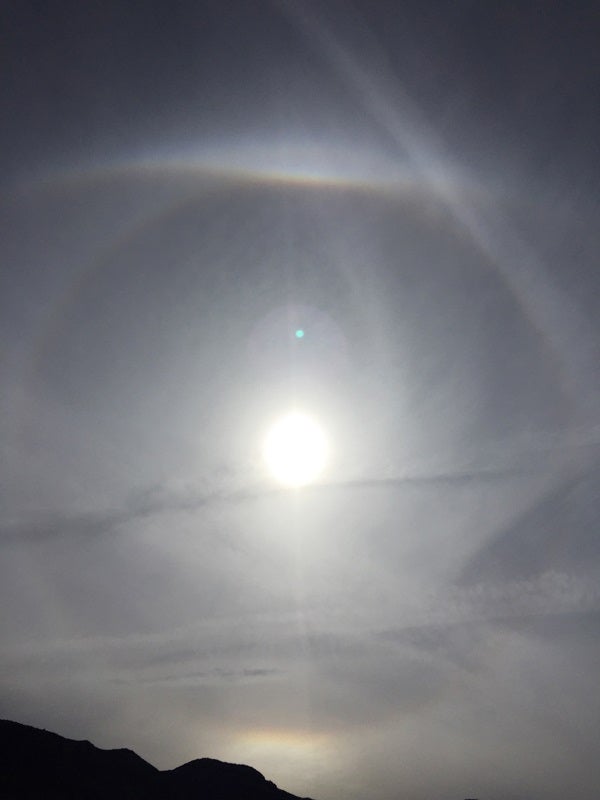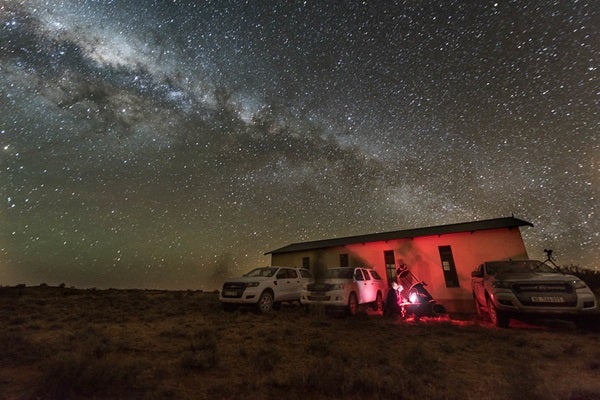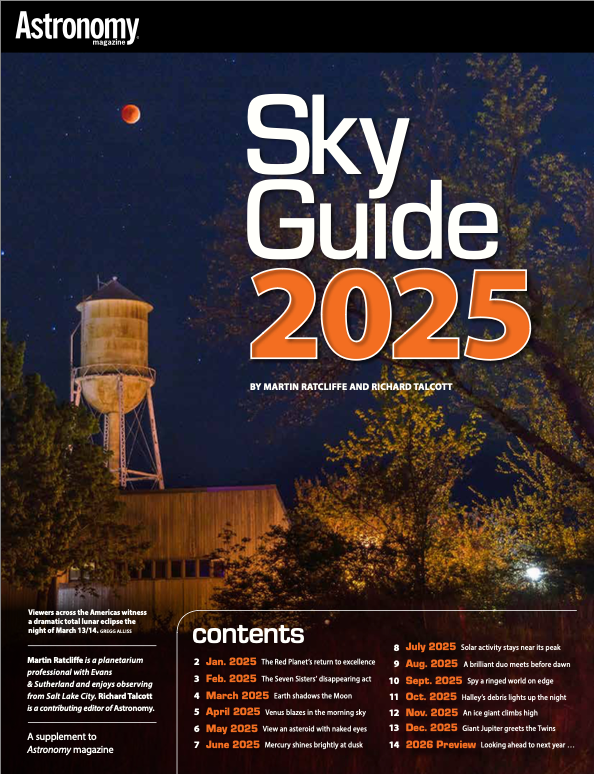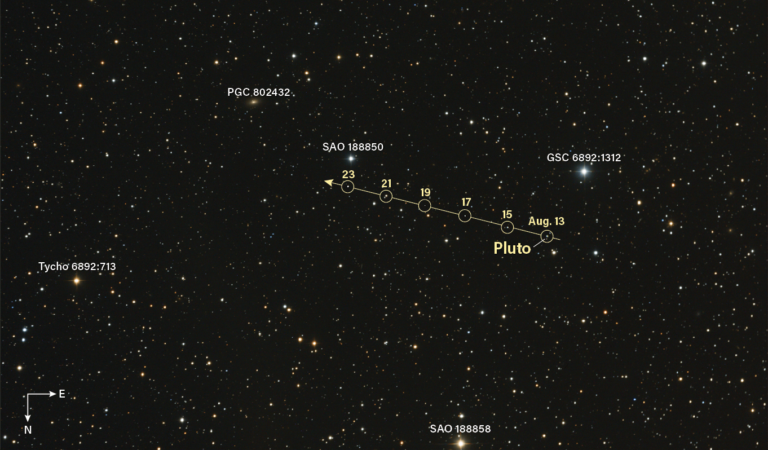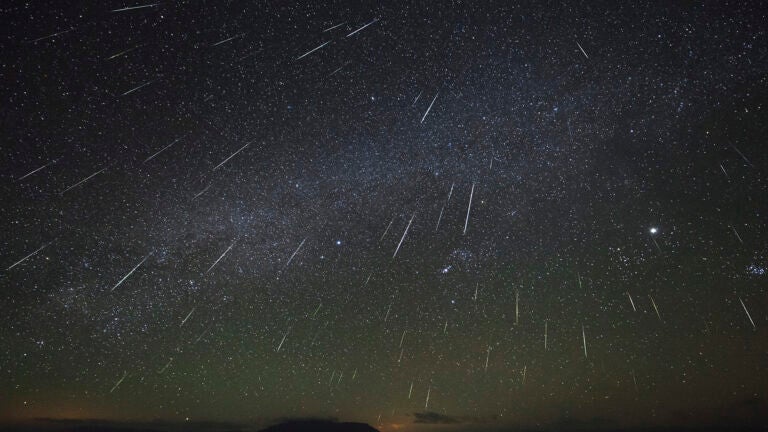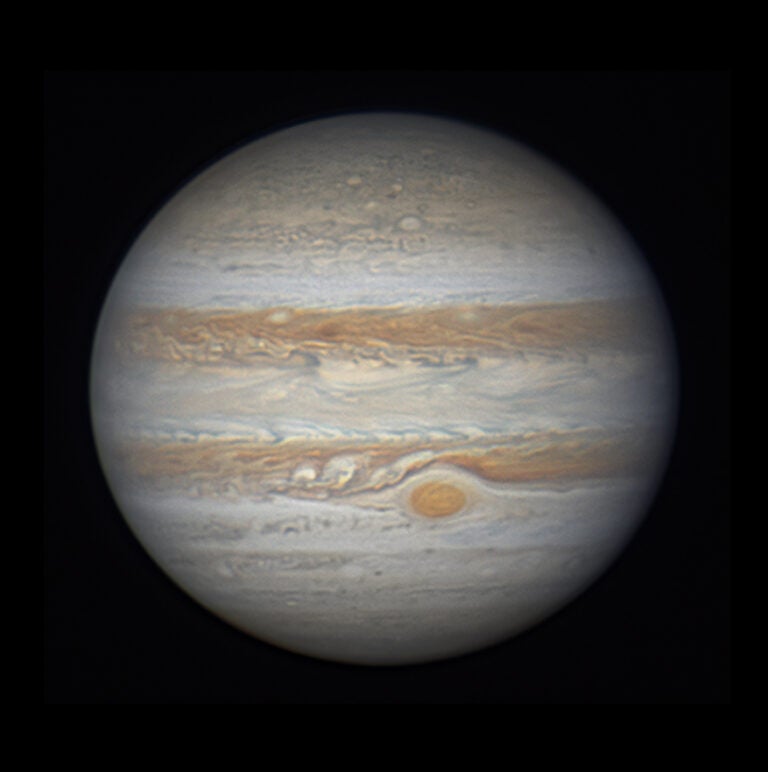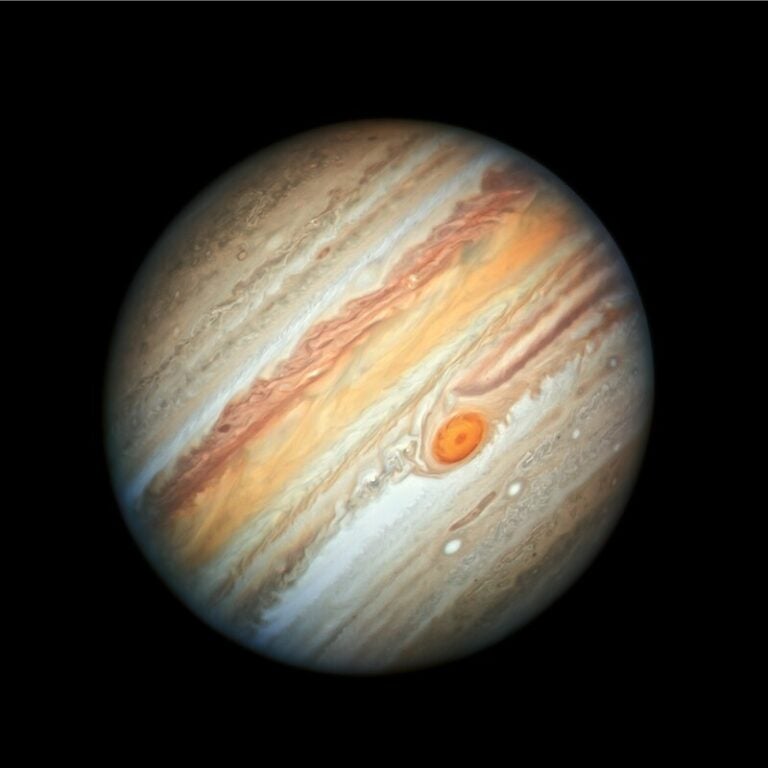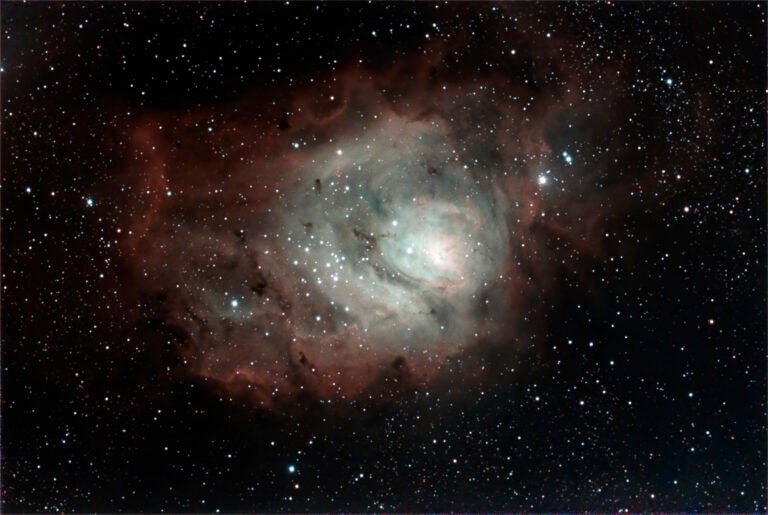The Northern Hemisphere’s winter can bring an abundance of microscopic ice crystals to the skies, and under the right conditions, these crystals interact with sunlight to create colorful atmospheric phenomena.
This month’s column was inspired by one such beautiful display captured above the Grand Canyon by Todd Smathers of Pleasanton, California. It includes long crystal horns and an uncommon arc of light first documented in 1820 by English naval officer and Arctic explorer Sir William Edward Parry while searching for the Northwest Passage.
The foundation
All the features captured by Smathers are tangential to, or near, the so-called 22° halo — a ring around the Sun with a radius of 22°. It’s the most common of all atmospheric displays created by ice crystals.
This usually sharp ring of orange and blue light appears when a gauze of thin cirrus clouds covers the sky. These clouds contain countless “pencil” crystals (long or columnar ice crystals shaped like hexagonal pencils) aligned with their long axes nearly horizontal. Their hexagonal shapes act like prisms, refracting and reflecting light.
A 22° halo forms when rays of light enter one side of “poorly aligned” crystals (those with a wide range of tilts) and exit from the opposite side, bending the light 22° from its original direction. Because red light refracts less than blue light, the halo’s sharp inner edge appears red or orange, while its diffuse outer edge is blue. During strong displays, you might spot yellow and green between the red and blue edges. The 22° halo is the foundation from which other ice-crystal phenomena can occur, especially the crystal horns.
Long horns
When well-developed pencil crystals orient themselves with their axes largely horizontal (singly oriented), they not only can enhance the top of the 22° halo — making it appear much brighter — but also bend light at greater angles and skew it to form long horns of colored light, called the upper tangential arc. The appearance of this arc varies with altitude.
When the Sun lies on the horizon, the upper tangential arc looks more like a V. As we see the Sun at greater altitudes, the arms of the V open and then curve downward, especially when our daytime star lies between 15° and 25° altitude.
Smathers also captured the lower tangential arc in its upside-down V form. When the Sun is at altitudes greater than 30º, the long horns of the upper and lower tangential arcs can meet and form a large elliptical ring just beyond and tangential to the 22º halo.
Yet another arc
Smathers’ photograph also shows a crystal phenomenon known as a suncave Parry arc, which looks like a tiny rainbow arcing over the valley between the horns of the upper tangential arc. As with the 22° halo, its interior is red or orange and its outer edge blue. To create a suncave Parry arc, not only do the pencil crystals need to be oriented nearly horizontal (as with the upper tangential arc), but their upper and lower hexagonal faces must also be horizontal.
As with the upper tangential arc, the appearance of a suncave Parry arc varies with the Sun’s altitude: When it’s on the horizon, the arc appears distant from the upper tangential arc, then gradually approaches it as the Sun reaches an altitude of about 30°.
As always, let me know what you see, or don’t see, at sjomeara31@gmail.com.


